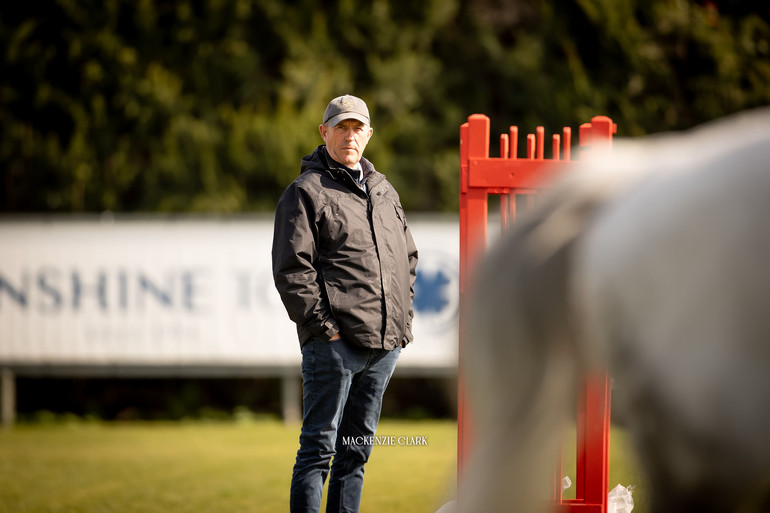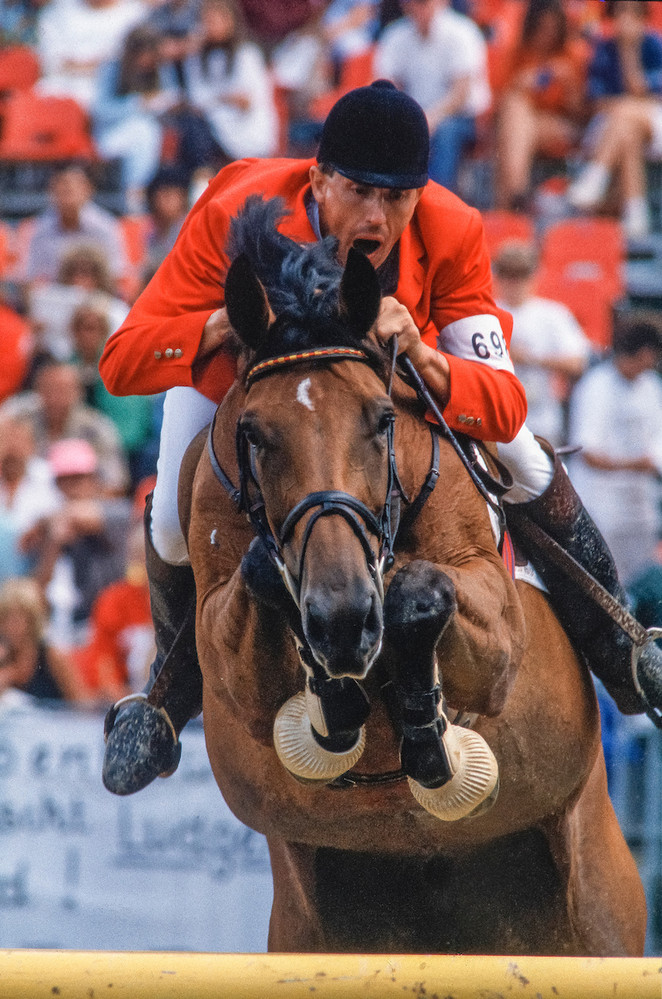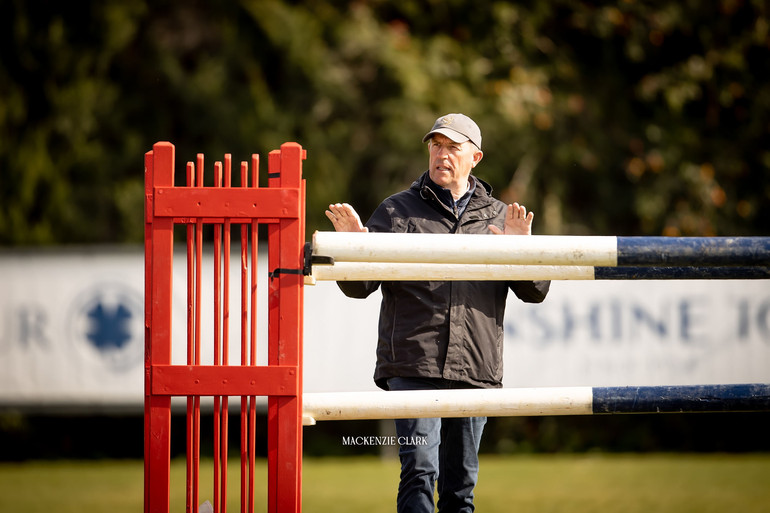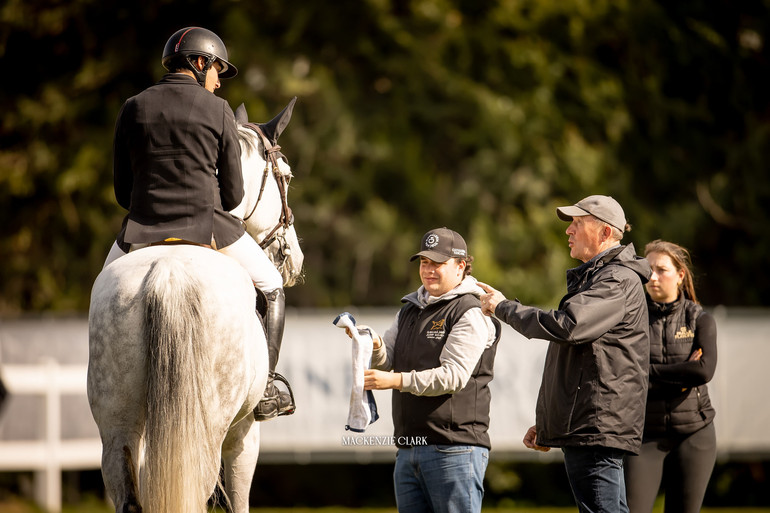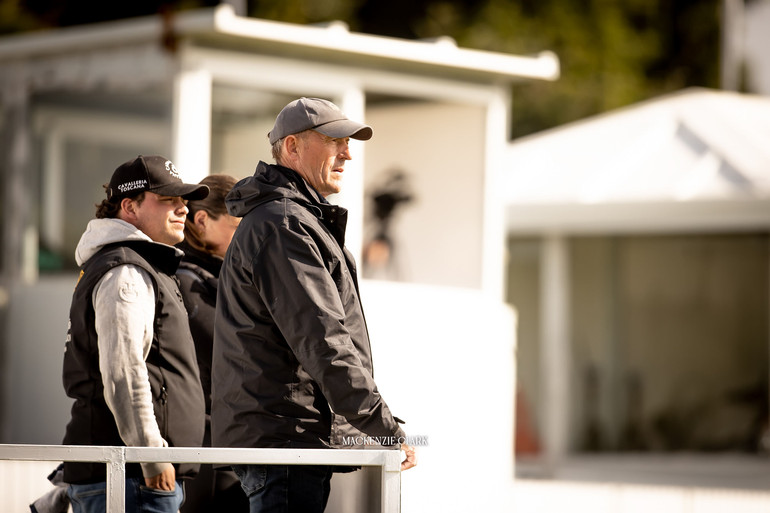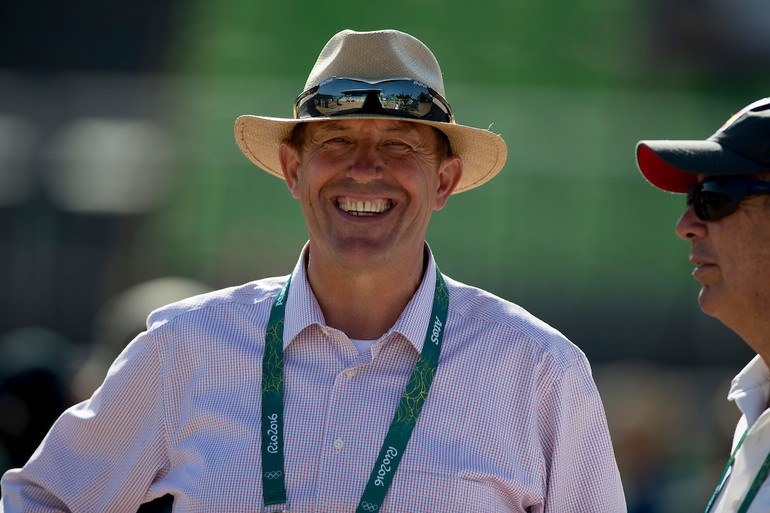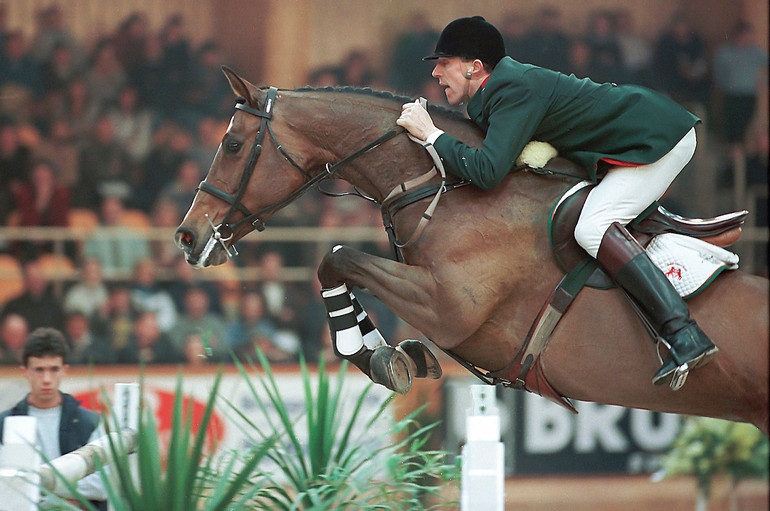Text © World of Showjumping
Piet Raijmakers is one of the most successful Dutch riders through all times. For more than three decades, Piet was a mainstay on the Dutch jumping team – and he was the one that brought Ratina Z, that eventually would become a legend of the sport, into the spotlight. In 1991, he won team gold at the European Championships in La Baule with Ratina – that at the time was 9-years-old – and the year after the pair won team gold and individual silver at the Olympic Games in Barcelona. Piet also won team gold at the World Equestrian Games in Aachen in 2006, riding Van Schjindel’s Curtis. WoSJ sat down with Piet to have a conversation about his opinions on good horsemanship, and his thoughts on where the sport is heading.
“Good horsemanship is to be able to read the horse,” Piet begins. “It means that by assessing the horse, you can understand it – but to be able to do this you also need to think like a horse. This is why we always should ask ourselves: ‘Why is the horse reacting like this?’ – because to understand the horse, you have to understand its nature. A horse is a herd animal, a flight animal, so a horse is never just nervous, or spooky, or difficult – it’s reacting on its instincts. And to become a good horseperson, you have to understand this.”
The number of riders is bigger than ever, but less and less really understand the horses
“Being a good horseperson has nothing to do with being a top rider; horsemanship has nothing to do with winning a class,” Piet says. “For me, a good horseperson is someone who knows how to take the horse through its different stages of life and who is able to educate it correctly – explaining and teaching the horse without stress.”
“The number of riders is bigger than ever, but less and less really understand the horses. ‘He spooked,’ I hear. ‘Yes, but why?’ – that’s what you have to ask yourself, but not many are interested in the answer,” Piet points out.
Time is essential
“When it comes to horses, time is essential – actually, it is the most important of all,” Piet says. “And the time-aspect starts the moment the horses are born. Most of my life, I have been breeding – it is something I really enjoy. I always kept my young horses outside the whole year around, as I personally don’t like to keep young horses inside. I make sure that they have 24/7 access to good quality hay, and I feed them pellets and corn separately. Being outside the whole year, means that the horses can move constantly – which is essential for their bodies and minds to develop correctly. Furthermore, without growing up as part of a group, the horses don’t develop the necessary social skills. It’s beautiful to watch; the yearling and the older mare – the yearling is finished with its food, goes over to the mare to get some more of hers, and the mare tells the yearling off. Perhaps, the first time, she will bite or kick, the next time, it’s enough that she moves her ears backwards – the yearling will have learned. And, to really understand horses and their behaviours, you need to observe this.”
When it comes to horses, time is essential – actually, it is the most important of all
“I give my young horses plenty of time, all the way to they are seven,” Piet tells. “They are out until they are 2.5 years old, of course they come in for the blacksmith and vaccinations, but for the rest they stay out. I’m not a big fan of free jumping, so I don’t do much of that. I give them all a very good chance, and I don’t judge them much by the little free jumping we do with them. When they are 2.5 years old, I do a vet-check and take x-rays. At the end of the year when they are three, we sit on them for the first time, and then you can get more of a feel for each horse – also over some small fences. It’s about whether they are quick, or not quick, the balance, and so on – that provides for a much better selection that free jumping in my opinion. Then, I put them back in the field and start them again at the end of their fourth year – most of them will remember 80% of what they have learned when they were three.”
“For me, it’s not important to put the young horses in a championship for their age group; if they have a good frame and a good mind, I ask them to do what I think is necessary, but never more,” Piet points out. “If I have a really good horse, I always take my time. That philosophy gave me a lot of good – and nice – horses, that also lasted long.”
“Time is also of essence in the daily management of the horses,” Piet continues. “My horses get fed at 6.30, and when they are finished with their food, they will walk around 30 minutes in the machine and go straight from there to the paddock while they are still warm in their bodies. In the paddock, they can do whatever they want – it’s their time. Then they come in and we start riding them, and after they can go back in the paddock – they are out at least three times a day. And whether I am at home or at a show, I always make sure the horses can eat grass! It’s the best thing you can do for them. Grass is natural and much better than any supplement you can ever feed for the stomach. If you let the horses eat grass, their whole gastro system will work better. Let the horses be horses, and be as good as you can to them, let it be as natural as possible, then they will normally give you back when you ride them. Don’t do things against the nature of the horse.”
If I would have had Ratina when I was 19, and not 36, she would probably never have become the horse she did
“Ratina is a good example of how important the time-aspect is,” Piet tells. “I am sure that if I would have had Ratina when I was 19, and not 36, she would probably never have become the horse she did because I would not have taken the time to understand her. It took me 3/4 of a year to just canter her one round on the right in my indoor. Not that she did not want to, but she had been free jumping on the left her whole life, so she thought right was no good – that’s where she met a whip to go back left. I rode her twice a day to get her to relax, lunged her, hacked her out in the afternoon with Rinnetou on her side, they would go in the paddock together, and slowly she started to trust me. But, only because I took the time to show her what it was all about.”
“We also have to remember that not all horses can become Grand Prix horses, and that some horses only become as good as they get because they ended up in the right place with the right rider,” Piet says. “Milton for example was not born what he became, but he ended up with a rider that understood him and what he needed – and he developed into the best horse in the world.”
Don’t create problems when there are none
“If a horse is refusing to do something it’s asked, it’s most of the time because of the rider and the rider’s lack of understanding,” Piet says. “Whenever I introduce a horse to something new, I always make a point out of doing it in a way that I’m sure it cannot go wrong. With young horses especially, it’s important to give them a good example. I never, ever jump a young horse for the first time without going behind another horse – no chance, never.”
“Furthermore, if you want to correct your horse, then you need to know that you were already in the same situation on a previous occasion without trouble and that you are not the cause of the horse not wanting to do what you ask,” Piet continues. “To start fighting brings nothing, you have to understand why the horse reacts the way it does.”
You have to understand why the horse reacts the way it does
“In my life, I had many horses that came to me because they did not jump the open water,” Piet tells. “I never had a fight with any of them. In nature, horses jump water without a problem so most of the time it’s only about approaching the water in a correct way, nothing else – head up and in the right rhythm. If I got a horse in that had problems with the open water, I first of all put it next to the water while another horse jumped it several times. After, I would go behind the other horse and make sure there was nowhere to go left or right. When the horses jumped it, I would reward them, and in the end they would do it by themselves. Then I took them to another place, and repeated the process there, until the horses had forgotten that they had a problem with water in the first place.”
“With horses, if they once get a chance to not do it, they will remember that and with an animal of 500-600 kgs, if they don’t want, they don’t want,” Piet says. “That means that you always have to ask yourself; ‘when I bring my young horse to the show, what can I expect?’ An open water, special fences, a lot of flowers, a lot of noise? Be prepared, these are things you have to think about in advance.”
Be with your horse
“Good horsemanship is also being with your horse,” Piet points out. “It makes me sad to see the next generation on their phones, and with air pods, when they are with their horses. When you are with your horse, you should be in another world – their world. How can you be with your horse when you are with your phone, or with someone on the phone?”
“In my opinion, it is not possible to become a complete horseperson without being able to do everything with the horse yourself,” Piet says. “You can maybe become a good rider, but you’ll never learn good horsemanship any other way. It’s not enough to let your groom be there when the blacksmith, dentist or vet comes, you have to be there yourself – with your horse, because you will learn so much about it. That’s horsemanship, not calling in and asking your groom what the vet said. Of course, you can get a lot of information from a good groom, but as a rider you also need to know what to do with that information and this you can only know if you know horses. But, I guarantee you, 90% of the riders today will not even be able to show their horses on the lunge to the vet – they will probably run away with them.”
It is not possible to become a complete horseperson without being able to do everything with the horse yourself
“I also think that if you want to go to the shows, you should know how to travel the horses,” Piet continues. “All my life, I drove my horses myself – they were my horses, so I wanted to travel with them. While it would be impossible for the professional top riders today, with the schedules they have, to travel with the horses all the time, they still know what these travels involve and what goes on while their horses are on the road. But, they are the exception rather than the rule: Most of the new generation arrive at the show and have no idea about how the horses’ travel was, or about how they feel.”
“What we see today is also that there are many trainers not competent enough, and that know nothing of horsemanship,” Piet says. “That’s also why we have a problem preserving horsemanship. As a trainer you have an obligation to teach the next generation that they have to be with their horses to understand them, but very few do. And how should the younger riders learn if the trainer can’t explain – how – what – why – in a simple way, but rather overrule the riders by shouting. A big, big job in the future will be to secure good trainers, because there are less and less of them.”
Watch and learn
“With all respect for the new generation of riders and their choices, most of them go to the show, they walk their course, go to the warm-up, they sit on the horse, and they go back to the hotel when they are finished. They don’t even watch the rest of the class, or other classes; they are not interested,” Piet points out. “If I did good or bad, I went to watch the rest of the class: I wanted to see who was winning, how he or she was winning and also – if I had a bad round – understand what I did wrong.”
“I will never forget one year in Aachen when Bosty won one of the classes. His take-off to the last fence was so far off that Hugo Simon and I went down to measure it, and it was nine meters between take-off and landing! Then you also understand that horses easily can jump an open water of 4.5 meters,” Piet laughs.
These days, people are not interested in learning
“In my young years, I was winning almost everything – alongside another Dutch rider called Piet Mooy. But, due to always trying to win every class I was in, I could not hold my horses anymore,” Piet tells. “I was 16-17 years-old at the time, so I hitchhiked to Aachen, crawled under a fence to get in – because I did not have the money to buy a ticket. My mother had bought me a small camera, that I could take twelve pictures with and I used all of them to take photos of different bits. I was so fascinated; I rode all my horses on the same bit and had never seen anything like this in my life. I remember coming home, and as I could not afford a hackamore, I looked at the photo I had taken and made one, but the problem was I did not know how to put it right…,” Piet laughs. “But, I learned from this – that’s my point. These days, people are not interested in learning. They go to the tack shop and ask the person behind the counter for a bit, but that person does not know your horse or how it feels.”
“As a rider you can also learn so much from the horses. I learned everything from my horses, or from watching others and their horses, or from taking lessons,” Piet says. “I was very lucky. When I was 15 years old, I was given two horses, and one of them was Jelca – a small horse, around 1.56m, and she was only 2.5 years-old at the time. Already back then, I understood that she was special. She was so clever; I could teach her to lay down on command, I would run next to her to jump the courses with her and she would know where to go next before I even showed her the way and she jumped the Z-classes by the time she was four. She taught me so much – but most importantly to always look for the clever horses with a good mind. Even now, at 66, I am still looking for a horse like her with that intelligence.”
Zero tolerance for rule violations
“Although there are many things about the development of our sport today that I am concerned about, I still think we are moving in the right direction – especially when it comes to horse welfare,” Piet says. “I am glad to see the regulations and rules we have in place to protect the horses. While 95% follow the rules, we need them for the 5% that ruin our sport. And for those 5% we have to be able to say to people that have nothing to do with horses or our sport; ‘that’s not allowed’. It’s also important that other riders speak up when they see something that’s wrong, and say ‘now, it’s enough’ – we have to speak up against those that ruin our sport. Furthermore, the officials also have to be educated and strong enough.”
“I’m also one of those who would welcome a rule that would completely ban back-boots. If it was up to me, we could take them off completely. Then you have a horse jumping naturally, and it will also create a more level playing field,” Piet points out.
We have to speak up against those that ruin our sport
“I am 100% in favour of a zero tolerance of rule violations,” Piet says. “This is especially important when it comes to riders who use drugs – there should be an absolute non-tolerance for any kind of drug-abuse in our sport. For me it’s unacceptable, especially when you are around animals. It should be a one-time rule violation, and you are out!”
“There will always be those against equestrian sport, but horses have been with people for more than 2000 years – it’s not like they have been caught in the wild to do this sport. Our horses would not even survive without humans. If I go to the field to see my horses, they all come galloping towards me – they know me and they like me. Horses and humans belong together,” Piet says.
Real horse people
“Nowadays, the management of a good horse is much more complicated than back when I was at the top – but it’s also much better,” Piet says. “Today the horses are top athletes, and so are the riders – it was not like that back in my days. Back then, the best riders had maybe five or six shows during the winter, and the less good riders had no shows at all. If you did good at a show, you won 5000 Euros, if you did not do good you maybe won 4000, whereas now you probably have to pay 5000 if you are not good, but if you are good, you can win 100.000. It’s a big difference to how it used to be, and much more is at stake. I do think though, that sometimes it would be good for certain riders to take two weeks home – but, ok, it’s their program and not mine.”
“With today’s sport, you really need to know how to make a plan. You have to take your end goal and plan backwards,” Piet says. “It’s easy to do too much, and it’s important to not always ask for the last – then the horses end up giving everything. You have to make sure the horses can breathe and relax, so they last as long as possible.”
“For sure you can reach the top with one or two really good horses, but you will never be able to stay there if you don’t have proper knowledge. Look at Steve Guerdat, Martin Fuchs, or Scott Brash – the reason they stay on top is because they are real horse people,” Piet closes off.
19.4.2023 No reproduction of any of the content in this article will be accepted without a written permission, all rights reserved © World of Showjumping.com. If copyright violations occur, a penalty fee will apply.



